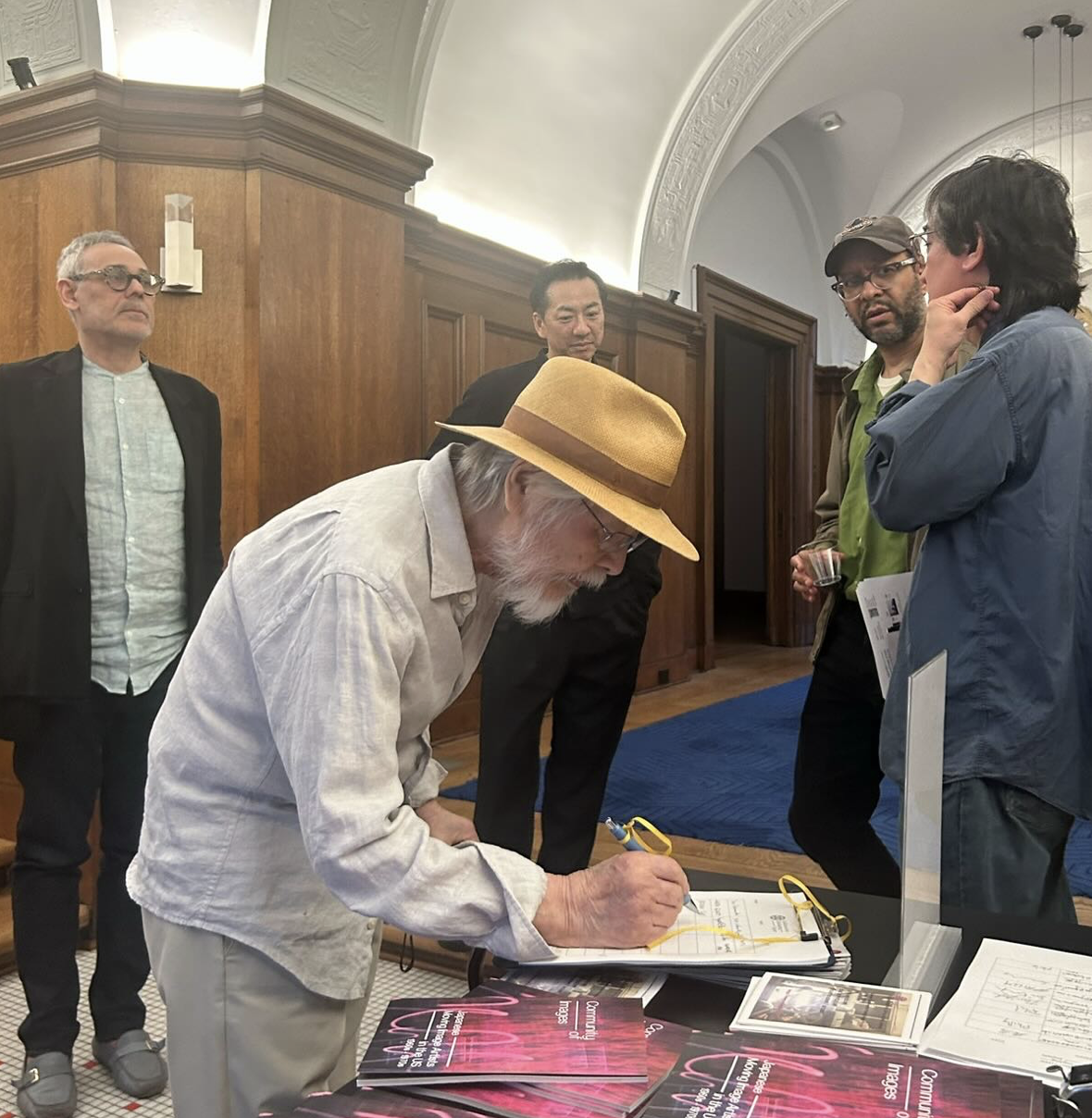In Memory of Yasunao Tone
Mia Parnall






We are immensely saddened to hear of the passing of our collaborator Yasunao Tone, with whom we were privileged to work with over the years.
In 2012, together with then-MoMA curator Doryun Chong, C-MAP Fellow Miki Kaneda, and CCJ’s Ann Adachi-Tasch, we organized a program featuring re-performances of works by Tone (program notes). The event included Kenji Kanesaka’s Hop Scotch, in which Tone and others created a live music score by performing instructions; Takahiko Iimura’s Dada ’62; and other important pieces.
In 2021, during the height of the pandemic, Tone graciously joined CCJ’s virtual book launch of Expanded Cinema and Intermedia: Critical Texts of the 1960s–1970s, hosted by Sophie Cavoulacos at MoMA.
In 2024, we had the pleasure of welcoming him in person at the opening events for the exhibition Community of Images: Japanese Moving Image Artists in the US, 1960s–1970s.
Based in New York since the 1970s, Tone was a central figure in the history of experimental art. His work spanned music, film, installation, and theoretical writing. He began his career in Tokyo as a founding member of Group Ongaku, alongside Takehisa Kosugi, Mieko Shiomi, and others. His improvisational, disruptive practice extended to performing from a van during protests against the US–Japan Security Treaty in 1960.
Tone was also involved with the Japanese performance collectives Neo-Dada Organizers and Hi-Red Center, and was a member of Fluxus; his graphic score Anagram for Strings was published by George Maciunas in 1963, and he later helped to establish the group’s Japanese branch. After relocating permanently to New York in 1972, he worked extensively with the Merce Cunningham Dance Company and performed at venues such as The Kitchen, the Experimental Intermedia Foundation, and P.S.1. His hybrid works for Cunningham, including Clockwork Video (1974) and Geography and Music (1979–1987), combined sound, text, video, and installation within performance contexts.
We will miss him dearly. Rest in peace.